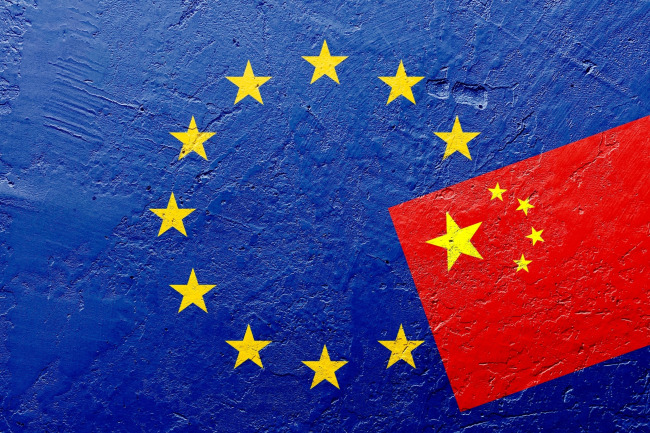Japan and Russia’s Small Steps Strategy

On the eve of the Vladivostok Summit, should we expect any significant progress in the laborious rapprochement between Japan and Russia?
If the December 2016 Summit did not generate decisive progress on the territorial issues between the two countries, it nevertheless heralded a new approach: faced by an adverse geostrategic environment since the Ukraine crisis, Russia and Japan are no longer seeking the quick conclusion of a peace treaty. They now favour an improvement in relations that is gradual, pragmatic and wide-ranging.
Struck by Western sanctions since its annexation of Crimea in March 2014 and fearing diplomatic isolation, Moscow had been trying to reinforce economic and political ties with its Asian partners.
Expectations regarding Japan were initially high: Abe was keen on improving relations with Russia and imposed belated and mostly symbolic sanctions while maintaining favourable conditions for dialogue with Moscow. Moreover, Russia saw Japan as an intermediary that could help the country be reintegrated into the G7 Summit.
Russian hopes in Japan were soon disappointed, however, when Tokyo failed to prevent the G7 from adopting new sanctions, an outcome that was interpreted in Moscow as proof of Japan’s subordination to the United States.
In reality, the acceleration of Russia’s pivot to Asia since 2014 has basically amounted to a strengthening of Russia-China relations, resulting in a greater dependency of Moscow in relation to Beijing.
Since the end of 2016, the return of security concerns to the negotiations has been very clear. This is first because the strategic significance of the Kuril islands has grown for Moscow in recent years, particularly as Russia looks to install a protection and anti-access system along the country’s northern coast and around the Arctic, from the Kola Peninsula to the Kuril Islands.
At the same time, the Russian attitude towards western powers, especially the US, has considerably hardened. That explains why Vladimir Putin said in June that if the Kuril Islands were returned to Japan, the installation of American bases there would be “absolutely unacceptable to Russia” – this position further dwindling the prospect of a territorial deal.
Against this deteriorating background, domestic support for a territorial compromise appears shallow in both countries. In Russia, there are few advocates of a rapprochement with Japan besides Vladimir Putin himself. In recent years, the Russians have come to realise than an agreement over the islands would not necessarily entail a large influx of investment from Japan, whose private sector shows scant interest in the Russian market. Russian leaders have also stated on several occasions that it would be unthinkable to ‘sell’ Russian territory. On the contrary, there are numerous interest groups in Russia – political, economic and administrative – that argue in favour of closer relations with China.
Japan, for its part, appears to be more supportive of a rapprochement, even if its proponents remain in a minority. Until December 2016, it was officials in the Ministry for Economy and Trade (METI) who handled the Russian question on behalf of Shinzo Abe. For METI, the goal has been to push forward with economic and energy-related cooperation without necessarily linking it to the territorial dispute. The Ministry of Foreign Affairs (MOFA), by contrast, is less willing to deepen a relationship that might harm Japanese interests over the territorial question, and which places Tokyo in an awkward position with its American ally.
Japanese business, meanwhile has little inclination to invest in Russia, while Japanese defence circles distrust Moscow and do not believe that any agreement would cause Russia to cease military activity around Japan.
Considering the hurdles on the road for a Peace Treaty, Russia and Japan turned to another approach that would allow more tangible and functional results. The two countries’ strategic objectives would be achieved by improving economic cooperation – mainly by working together to develop the Southern Kuril Islands – as well as by building up confidence on security issues.
This approach has a number of benefits: it encourages dialogue and regular visits; it offers tangible proof, with each ‘mini-victory’, that the partnership is advancing; and it allows both governments to feed their populations stage-managed stories of diplomatic triumph. In its early stages, it should allow Japan to return to the islands, rather than the islands to return to Japan.
Read the full article on the APPS website.

Available in:
Regions and themes
Share
Related centers and programs
Discover our other research centers and programsFind out more
Discover all our analyses
Opening up the G7 to South Korea to Address Contemporary Global Challenges
The G7’s global influence has diminished as powers like China reshape international governance through initiatives such as BRICS and the Shanghai Cooperation Organisation (SCO). With the G7 now representing just 10 per cent of the world’s population and 28 per cent of global GDP, its relevance is increasingly questioned.
Expanding SPDMM as a pivotal institution in the Pacific – A French perspective
The South Pacific Defence Ministers’ Meeting (SPDMM) is the only forum that brings together defense ministers from the wider South Pacific — including Chile, which is hosting it for the first time. This heterogeneous group of countries with varying resources, capacities, and interests — Australia, Chile, Fiji, France, New Zealand, Papua New Guinea (PNG), and Tonga — are united by their shared determination to strengthen cooperation on maritime security and humanitarian assistance and disaster relief (HADR) activities.
EU’s Derisking From China: A Daunting Task
With economic security as a major concern, the EU has recently turned to “derisking” from China. The EU strategy entails reducing critical dependencies and vulnerabilities, including in EU supply chains, and diversifying where necessary, while recognizing the importance and need to maintain open channels of communication.
Sri Lanka’s NPP Government. From System Change to Structural Compliance
In September 2024, a relative outsider to Sri Lanka’s two-party-dominated political system, Anura Kumara Dissanayake, won the presidential elections. The anti-establishment, populist movement he represented, the National People’s Power (NPP), went on to receive an overwhelming mandate in the November 2024 general elections, winning 159 seats in a 225-member parliament.










